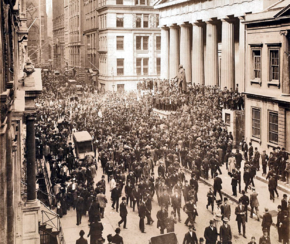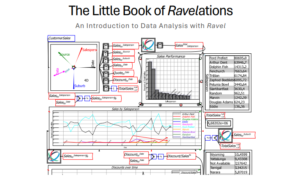After the US government created a national currency in 1863, the US dollar (also known as the greenback) the banking system of the United States had one currency with decentralized payment clearing and a decentralized system of “lender of last resort” which was who provided liquidity (money) when it was feared a financial crisis had to be averted or one had occurred.
Financial and bank panics were frequent from 1873 until 1907. The 1907 crisis was so large, and so quick, and caused such damage, that it was felt something had to be done. It was in fact the straw that broke the camel’s back and led to the birth of the US central bank, the Federal Reserve.
————————————
This post is part of a larger series and sub-series.
Here is a link to the series: The history of banks and banking regulation
and to the sub-series: United States Banking and Bank Regulation History
————————————
While US national banks in the latter part of the 19th century were authorized to issue US dollars in the form of banknotes, that practice was not yet common. When a US national bank made a loan, it took the money out of reserves. This rippled through that bank’s branches, such that overall reserves were down, and therefore they were more limited in the amount of dollars they could loan out.
This tended to occur every fall, at harvest time. Farmers had to pay migrant labour in cash, which they recouped when the harvest was sold. So every fall, farmers in the United States would take out loans from banks. And as a result, every fall, the availability of credit shrunk, as a result of banks making those loans from their reserves, rather than issuing new money.
Most years, this tightening of credit did not cause a financial panic. But sometimes, when investors were borrowing money to buy assets with the expectation they would appreciate in value, they sometimes needed to borrow a little more to make good on another debt payment while they waited for the asset values to appreciate. And sometimes, they went to borrow, and couldn’t. This caused them to default on a loan payment, which someone else was depending on to make theirs. If this was widespread, it could cause the failure of a bank or two, which caused the deposits they were holding to cease to exist, which caused other investors and banks to miss their loan payments, etc, etc.
There were five major financial crises after 1863: 1873, 1884, 1890, 1893, and 1907. With the exception of the 1884 crisis, they all occurred in the fall when credit was tight during the harvest season.
Not only were there five major financial panics, but each was worse than the one before. After the panic of 1907, Congress appointed a commission, the Monetary Commission to figure out what happened and to prevent it from ever happening again.
Interestingly, these frequent financial crises were an American thing. The United States had authorized national banks to issue currency, but this was not unique. Such systems were very common in other countries in the late 19th century.
So why was the American system so prone to financial panics?
Quite simply, the rules of banking, aka banking regulations in place at the time.
Rule #1: National bank notes could be issued only to the limit of government bonds owned by the bank. In fact, until 1900, for every $90 of notes outstanding it was required for the bank to have surrendered $100 of government bonds to the Comptroller of the Currency.
This caused the supply of banknotes to vary, not according to where credit was needed, but according to the availability and price of the legally required government bonds.
Rule #2: All banks, including national banks, were limited in their ability to open branches. This prevented banks from shifting funds from areas that had more than they needed to areas that needed more than they had.
These two rules combined created a rigid financial system incapable of flexing when needed to accommodate short-term needs for more, or less, money on hand.



